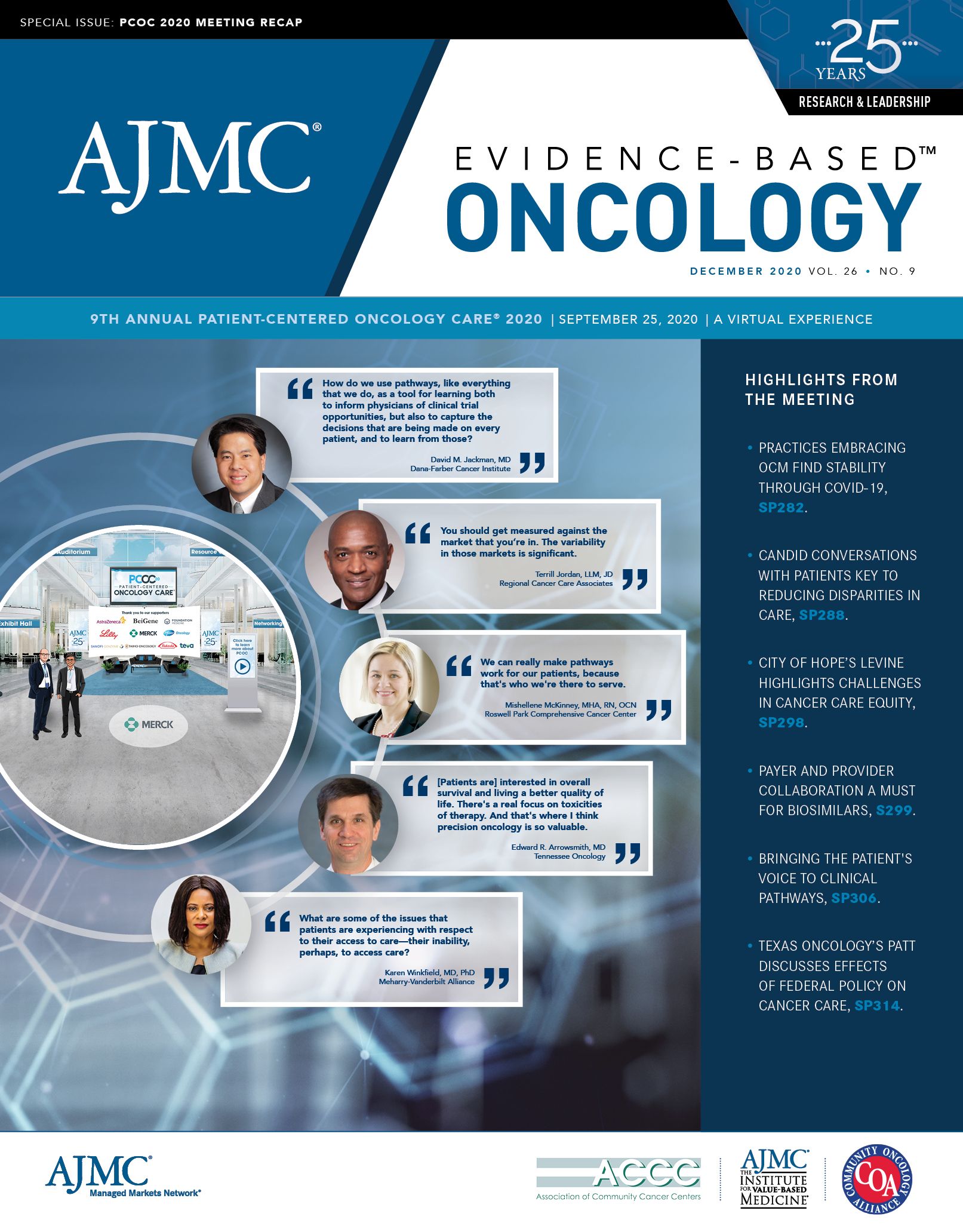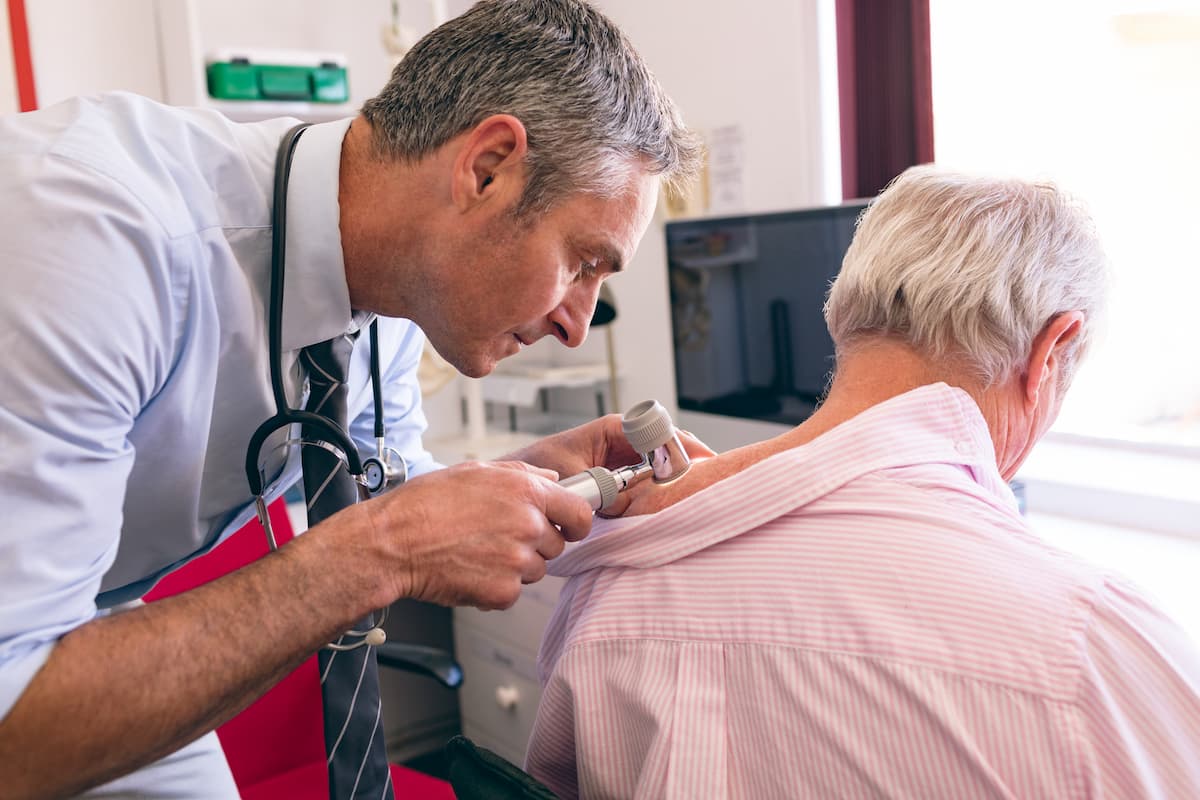Publication
Article
Evidence-Based Oncology
Addressing Cancer Disparities Requires Asking Questions and Putting Aside Assumptions
Author(s):
Speakers at Patient-Centered Oncology Care® highlighted injustices in the US health care system, the risk of financial toxicity, and how providers can do a better job to ensure their patients achieve health equity, during a panel discussion.
Despite progress in cancer treatments, patients with cancer are still affected by disparities in care, incidence of disease, and outcomes.1 During a panel discussion at the Patient-Centered Oncology Care® 2020 conference, moderated by meeting Cochair Joseph Alvarnas, MD, vice president of government affairs, senior medical director for employer strategy, and clinical professor, City of Hope Comprehensive Cancer Center, and editor-in-chief, Evidence-Based Oncology™, speakers highlighted injustices in the US health care system, the risk of financial toxicity, and how providers can better ensure that patients achieve health equity.
Karen Winkfield, MD, PhD, executive director, Meharry-Vanderbilt Alliance, and Emeline Aviki, MD, MBA, assistant attending, Department of Surgery, Memorial Sloan Kettering Cancer Center (MSKCC), said they were first exposed to disparities as medical students at Duke University and then again when both started working in Boston.
Medical students often went into rural or Black communities to try improving access to care, but Boston had universal health care coverage before passage of the Affordable Care Act. It was there that stark differences in access to care despite insurance coverage became apparent, Winkfield said.
“It started me on this pathway to understand what some of the other barriers were,” she said. “What are some of the issues that patients are experiencing with respect to their access to care, their inability, perhaps, to access care?”
Winkfield changed career paths from biochemistry to a focus on community engagement research, which she viewed as crucial to finding information that would “revolutionize” how health care engaged with communities.
Aviki had a slightly different path. During medical school, she also got her MBA, and through her research on alternative payment models and value-based care, she came to realize that the payment models focused on the finances for payers and providers but “left the patients out of the whole equation.” She began to do work on financial toxicity, a term describing the financial burden from direct and indirect health care costs on patients that can increase psychosocial distress and adversely affect patient outcomes and quality of life.
At MSKCC, Aviki serves on an affordability task force that attempts to improve awareness of patients who might be at risk of financial toxicity and to “educate providers and patients with respect to early signs of toxicity and how we can empower providers to attack that toxicity before it ever occurs.”
How do providers help enact change in the system? According to Jeanne Regnante, chief health equity and diversity officer, LUNGevity Foundation, health systems, providers, and other organizations need to start learning from one another and asking better questions.
“I think the work in this area requires humbleness, in general, and it requires somebody to always be aware that they might not know something and ask the question,” Regnante said.
Engaging with vulnerable communities means acknowledging that you don’t understand the challenges facing those individuals. LUNGevity recently went through its first phase of implicit bias training, during which the staff focused on assumptions.
Winkfield said humility is necessary in this area of work and in addressing and understanding how someone’s culture fits into their health and health care.
“I do not believe in cultural competency,” she said, indicating that this implies someone can watch a video and understand someone’s culture. “No, it’s really about humility.”
This humility applies to culture, finances, and even sexual identity. Instead of asking a woman about her husband, clinicians should ask more generally who lives at home with her.
“It’s the questions that you ask that can show people that you’re open to someone having a lifestyle that’s different from, you know, the ‘mainstream,’” Winkfield said. She said medical schools have to do a better job of training people to ask questions.
One conversation that is difficult for providers to have involves cost of care. MSKCC surveyed its clinicians, and of 350 who responded, 95% said they want to help patients with financial issues during treatment. But the same proportion said they felt ill-equipped to ask the question because they didn’t know how to respond to the answer, Aviki said.
The taboo of asking financial questions needs to be eliminated, she said. Patients and doctors should feel comfortable with discussing financial issues. Aviki said making a habit of asking patients about such issues can help them feel more comfortable in raising the topic.
“We are willing to pay tens of thousands of dollars a month for a 3-month progression-free survival difference,” she said. “Well, we can gain that and more by addressing patients’ financial issues and social determinants, as well.”
Ultimately, it will cost more money to establish the processes, hire employees and analyze data to address disparities, Regnante said. But spending that money will mean making more resources available and ensuring that innovations benefit all patients. Winkfield said the cost is up front, but the US health care system loses billions of dollars every year because of health disparities. Investing the money now will mean setting up patient navigation, doing financial toxicity screenings, and putting patients in touch with needed resources.
“Please take the time to get to know the person in front of you, and figure out what their needs are,” Winkfield said. “We may not always be able to meet every single one of their needs, but just by asking, we will help to engender the trust that is vital to make sure our patients feel well cared for.”
Reference
AACR Cancer Disparities Progress Report 2020: Achieving the Bold Vision of Health Equity for Racial and Ethnic Minorities and Other Underserved Populations. American Association for Cancer Research. 2020. Accessed October 14, 2020. https://cancerprogressreport.aacr.org/disparities/






